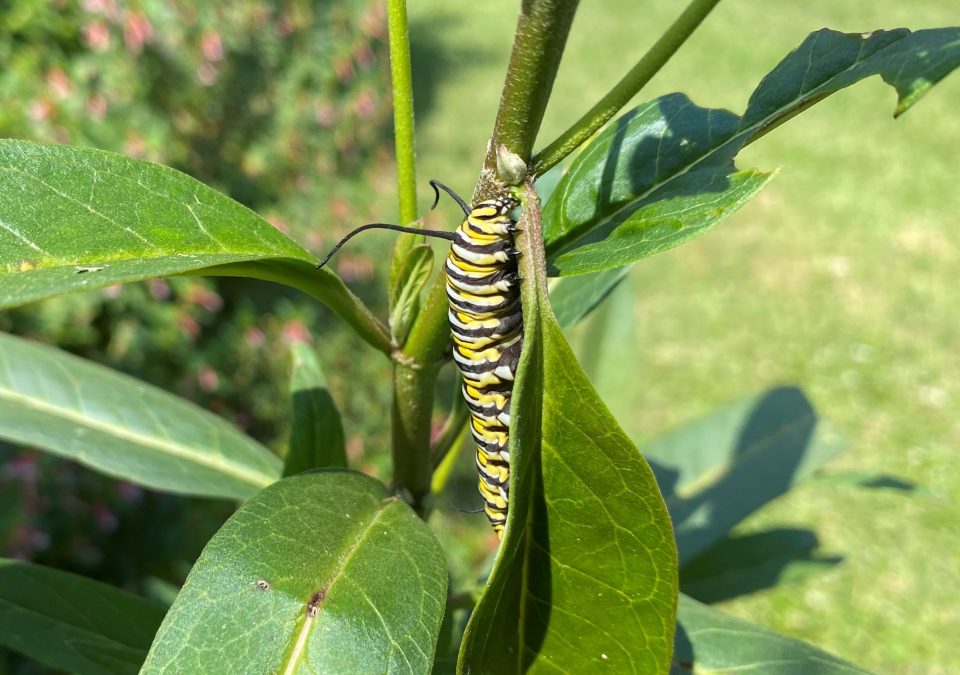Celebrate National Library Week April 7-13, 2024 at Terrebonne Parish Library
April 6, 2024
Learn to crochet this April at the Lafourche Parish Public Library
April 6, 2024By Jennifer Blanchard
“Look deep into nature, and you will understand everything better.” – Albert Einstein
The use of plants as medicine in the written record dates back over 5,000 years to the time of the Sumerians. This information was “written in stone” in the form of clay tablets. The ancient Egyptians were the first to put pen to paper or, in this case, another plant material — papyrus. In 1550 BCE, the Ebers Papyrus records the plant cannabis could be applied in a topical formulation for use in treating inflammation. Some other plant medicines in the text include castor oil, elderberry, pomegranate and myrrh. Plants form the basis for health and wellness around the globe, and Indigenous people have carried the knowledge of plant medicine for many thousands of years.
One of the first articles written on the Native American use of plants as medicine in Louisiana is from a paper published in 1909, when anthropologist David Ives Bushnell Jr. interviewed some of the remaining members of the Choctaw of Bayou Lacomb, and in 1941, anthropologist Frank G. Speck published “A List of Plant Curatives Obtained from the Houma Indians of Louisiana.” There is a unique history of Native American plant medicine, secret doctors, Cajun traiteurs and faith healers in Louisiana. Wanda L. Fontenot wrote of traditional African American medical practices in the book “Secret Doctors: Ethnomedicine of African Americans.”
The term “Cajun traiteurs,” or “traiteuse” for a woman, means a treater or healer. This practice originates in the early history of the Acadian people that immigrated from Nova Scotia and settled in south Louisiana. The tradition combines the use of plant medicines and faith healing practices, which have many influences, including the surrounding Native American tribe of the Houma, African traditions, Catholic prayer and plants known and brought by these early settlers. Recently, the book “Healing Traditions of South Louisiana” was written by Mary Broussard Perrin and Beverly Constantine Fuselier, two traiteuses who are also Lafayette Parish Master Gardeners and overseers of the Healer’s Garden at Vermilionville.
The fabric of this history of plant medicine in Louisiana is interwoven in the ancestry of its people and places. This story can be told in your own healing garden by the addition of several attractive plant selections. While these plant-based treatments have historically been used by Indigenous people, the advancement of science, technology and medicine have led to the discovery of more appropriate modern medicines in the treatment of disease. Please seek the advice of your physician or medical professional when treating these ailments. See medical disclaimer.
Pleurisy root (Asclepias tuberosa) is also called butterfly weed or orange milkweed. This plant has bright orange flowers and looks very similar in color to A. lanceolata. The difference in the two orange milkweeds is habitat; while A. tuberosa prefers a well-drained soil, you will find A. lanceolata in wetland environments. Milkweeds are important larval hosts to monarch, queen and grey hairstreak butterflies. The root of A. tuberosa was used by the Native Americans to treat inflammation of the lungs. Caution: This root contains toxic cardiac glycosides. Plant by seed or root cutting taken in the fall.
Pale coneflower photo credit Jennifer Blanchard
Pale coneflower (Echinacea pallida). The flowers can be light pink to purple in color, and the roots are used to make an infusion taken for stimulating the immune system. You can plant the closely related purple coneflower (Echinacea purpurea) with broader petals and brighter pink-to-purple flowers, but the bioactive immune building property of the root compounds has been found to be higher in E. pallida. These flowers are best if propagated by seeds exposed to moist cold stratification (alternating hot and cold temperature) and germinated or transplanted in fall or spring.
Indian blanket (Gaillardia pulchella) is also called the Indian fire wheel. Its common name comes from the beautiful color pattern of the flowers that are red at the center and fade to orange then yellow at the edges. It also comes from the spreading habit of blanketing your flowerbed. In the past, Native Americans have used it in treating gastroenteritis with an infusion made from the roots. A powder from the crushed root was used as a dermatological aid. It was also used as a postnatal aid that was rubbed on a mother’s breast to wean nursing babies. When planting it is best to direct-plant seeds in the fall into moist soil.
Liatris is commonly known as prairie blazing star (Liatris pycnostachya) and the cattail gayfeather. It is a beautiful spike of purple flowers that makes a great cut flower selection. The Native Americans had multiple uses for Liatris, including a root poultice for snake bites and an infusion of the plant was used as a gargle for sore throat. To grow, plant seeds that have been lightly scarified (scratched using mechanical or chemical means) and exposed to moist and cold stratification for a period of three months.
Scarlet honeysuckle photo credit Jennifer Blanchard
Scarlet honeysuckle (Lonicera sempervirens), also called coral honeysuckle, is a vine with bright red flowers that are highly attractive to hummingbirds and other pollinators. The plant was used by Native Americans for treating asthma by drying and smoking the plant and in the treatment of bee stings by chewing the leaves and applying to the affected area as a poultice. Propagate by new growth cuttings taken in late summer to early fall or plant by cold-stratified seed.
Mountain mint photo credit Jennifer Blanchard
Blue mountain mint (Pycnanthemum muticum). Its fragrant and almost bluish green leaves have been used for treatment of headaches, coughs, colic and colds. Grow this plant by sowing fresh seed directly in soil.
Sassafras (Sassafras albidum) is a shrub with great historical and cultural significance in Louisiana used by Native Americans as an anti-inflammatory and febrifuge. Grow by taking root cuttings in early spring before leaves develop or by seed that has been stratified (exposed to alternating hot and cold temperature). It is recommended that clean seed be stratified for four months at 41 F.
Rattlesnake master (Eryngium yuccifolium), also called button eryngo because of the buttons containing the flowers, was used by Native Americans to treat snakebite, fever, headache and stomachache. Grow by division by carefully separating young plants or pups in early fall or late spring or by collecting and stratifying seed.
Mamou Photo credit Jennifer Blanchard
Mamou or spirit beans (Erythrina herbacea), also called coral bean, was used by Native Americans as a sacred medicine in the treatment of illness and by the Cajun traiteurs to treat digestive issues. To germinate, plant the scarified (scratched using mechanical or chemical means) seeds in moist, well-draining soil. Caution: The seeds are toxic if ingested.
Maypop (Passiflora incarnata), which is also called passion vine, is a climbing and spreading vine with beautiful, fringed purple to white flowers. This plant is the larval host to the Gulf fritillary butterfly. The leaf is used for treating anxiety and insomnia. Propagate by cutting or directly sowing seed.
The Native Americans that were the first inhabitants of this land in Louisiana lived in harmony with nature, and through this way of living, there is much to be learned. Please use care when harvesting wild seed and use sustainable practices. All the plants listed can be sourced by local native plant nurseries and the seeds are available commercially online. If you would like to learn more about Louisiana medicinal plants or would like further assistance with resources for acquiring these plants, please contact JenBlanchard@lsu.edu.
There are so many natural health benefits to growing your own garden, and the ecological benefit of planting native plants provides crucial habitats for all our native pollinators. I hope this information is helpful in beginning your own healing garden journey and in continuing the conservation of these plants that are rooted in a deep and rich healing history.
Jennifer Blanchard is a botanist and an instructor of horticulture in the LSU College of Agriculture.
This article appears in the winter 2024 edition of Louisiana Agriculture.
Medical disclaimer
The information contained in this article is for educational and informational purposes only and may not be construed as medical advice. This information is not intended to replace medical advice offered by physicians. Medicinal plants may also be considered poisonous plants and should not be harvested or used without the proper knowledge of these plants and the compounds they contain.
Women who are planning to get pregnant, are pregnant or are nursing should consult a physician before engaging in the use of herbal medicine as it may have adverse reactions, such as miscarriage.
Plants may contain compounds that have adverse reactions with prescription medications. Do not engage in the use of plant medicine while taking pharmaceuticals without first consulting your physician.






